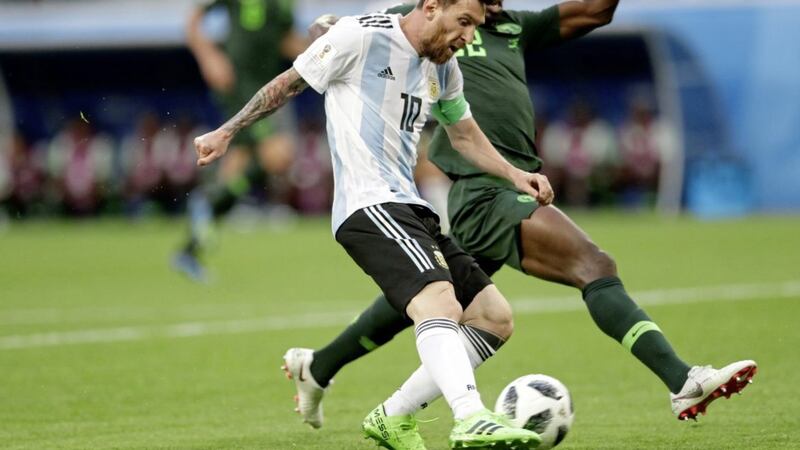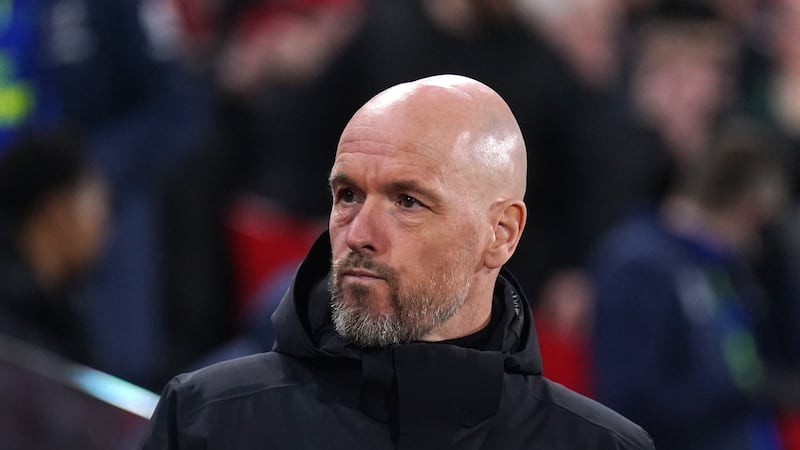THE old Olympic motto was ‘Faster, higher, stronger’ (apparently there’s a new one with ‘Together’ tacked on to the end).
Fifa’s equivalent appears to be ‘Bigger, richer, more’, at least judging by its proposals to have World Cups every other year.
Not only that, but under its plans the six continental competitions, the Euros, the Copa America, the African Cup of Nations and so on, would all also move to a two-yearly cycle.
That’s an aspect which has been somewhat overshadowed by the biennial World Cup idea, perhaps understandably.
Fifa trumpeted the finding from its global survey (of around 15,000 people) conducted in July of this year that a ‘majority of fans favour more frequent men’s Fifa World Cups’.
That was true, with a total of 55 per cent wanting some sort of change: 30 per cent plumping for two-yearly, 14 per cent for three-yearly, and 11 per cent for an annual World Cup.
Yet it was also true that the most popular cycle for World Cups was… a four-yearly one. What we already have. The remaining 45 per cent of respondents were happy with the way it is.
Indeed, if you discount those head-the-balls who voted to have a World Cup EVERY year, then more people want the status quo than want achievable change.
Yet Fifa, and their Chief of Global Football Development, Arsène Wenger, appear extremely determined to push forward this biennial idea.
There’s no doubt that the international match calendar is far from perfect, with players having to travel long distances, with ‘club v country’ disputes - tug-of-wars over players - being prevalent long before we’d heard of Covid and travel lists and enforced quarantines for travellers.
Fifa is also concerned about the increasing European domination of World Cups, not only in terms of winning the tournament but as regards progress to the latter stages.
The global governing body stated that “several current issues have to be looked into, namely the progressive competitive imbalance, the absence of a mandatory rest period for players, the excessive number of travels and matches endangering player health and well-being, and the constant interruption of domestic leagues disrupting club competitions.”
Uefa, the European authority, hit back by highlighting what it saw four key ‘dangers’ in the Fifa proposals – the dilution of the mystique around major tournaments, the erosion of opportunities for weaker teams, the impact on player welfare, and on the development of the women’s game, with competitions forced to go head-to-head in the same summer.
Uefa added in its statement: “These are just some of the serious concerns that the Fifa proposal provokes at first glance and they cannot be dispelled simply with unsubstantiated promotional slogans on the supposed benefits of a thicker calendar for final tournaments.”
Fifa has pointed out that since the World Cup started in 1930 only 78 different countries have reached the finals tournaments, with 133 countries never having taken part.
Yet many of those countries haven’t existed for very long, in the greater scheme of things, with many nations emerging, or re-emerging, after the break-up of the Soviet Union, for example.
Sure, even plenty of those who have been at World Cups haven’t been there often.
However, although Northern Ireland haven’t qualified for a World Cup for 36 years, and will be hard-pressed to qualify for Qatar 2022, their manager Ian Baraclough is still dubious about changing to a biennial format, commenting:
“I would think that needs to be looked at in a lot more depth. I’m not a big fan of it, I have to say, even though it might give us more opportunity to get to a major tournament.
“I think the calendar at the moment, Euros every four years, World Cup every four years, there’s something special about achieving that [qualification].
“Nobody within our group, apart from [assistant manager] Jimmy Nicholl, has qualified for a World Cup, and I think that’s something special to him, how hard it was to get to those World Cups in ’82 and ’86.
“There’s something special about going to the Euros for the lads within the group. If it becomes more of the norm, every two years for a World Cup, then those memories don’t become so special. For Northern Ireland to reach any major tournament is big, big news, and something that’s got to be special for everyone involved.”
Fifa seems to be arguing that its plans would allow it to pump more money into coaching and development in weaker countries.
However, rather than ‘levelling up’, it looks like these proposals might only ‘level down’, or make the strong stronger.
Think about the players from the traditionally big/ successful nations (named here in alphabetical order): Argentina, Brazil, England, France, Germany, Italy, the Netherlands, Portugal, Spain, Uruguay.
You can then add Belgium, Mexico, the USA, Switzerland, Sweden, Russia, Colombia, Chile, Croatia, Nigeria, Cameroon, Ghana, Morocco, Algeria, Tunisia, Ivory Coast, Japan, South Korea, Saudi Arabia, Australia to that list of almost automatic qualifiers for their respective continental tournaments and World Cups.
In the second half of this decade players from all those nations could be playing a major tournament every single year, on top of their club commitments.
Former Arsenal manager Wenger is a highly intelligent football man, and he insists that designated rest periods will be factored in, adding:
“We are not looking to increase the number of games, and we are very conscious of that. What is most important for me is more meaningful games. We want to give the fans what fans demand today, and that is meaningful games. We want to respond to that expectation.”
Yet the expectations, the demands on the very top players, from the leading nations and at the major clubs, still appear likely to lead to burnout.
That could allow lesser lights to catch up - but they might also fall further behind as more established nations deepen their squad strengths and experience by using different players at different annual tournaments.
Bear in mind that the 2026 World Cup is set to have 48 participants, a 50 per cent increase on the current 32 - and double what it was in 1994.
That’s almost a quarter of the world’s countries at a World Cup. Surely that’s enough of an advance?
As the old Irish saying goes, what’s rare is wonderful.








